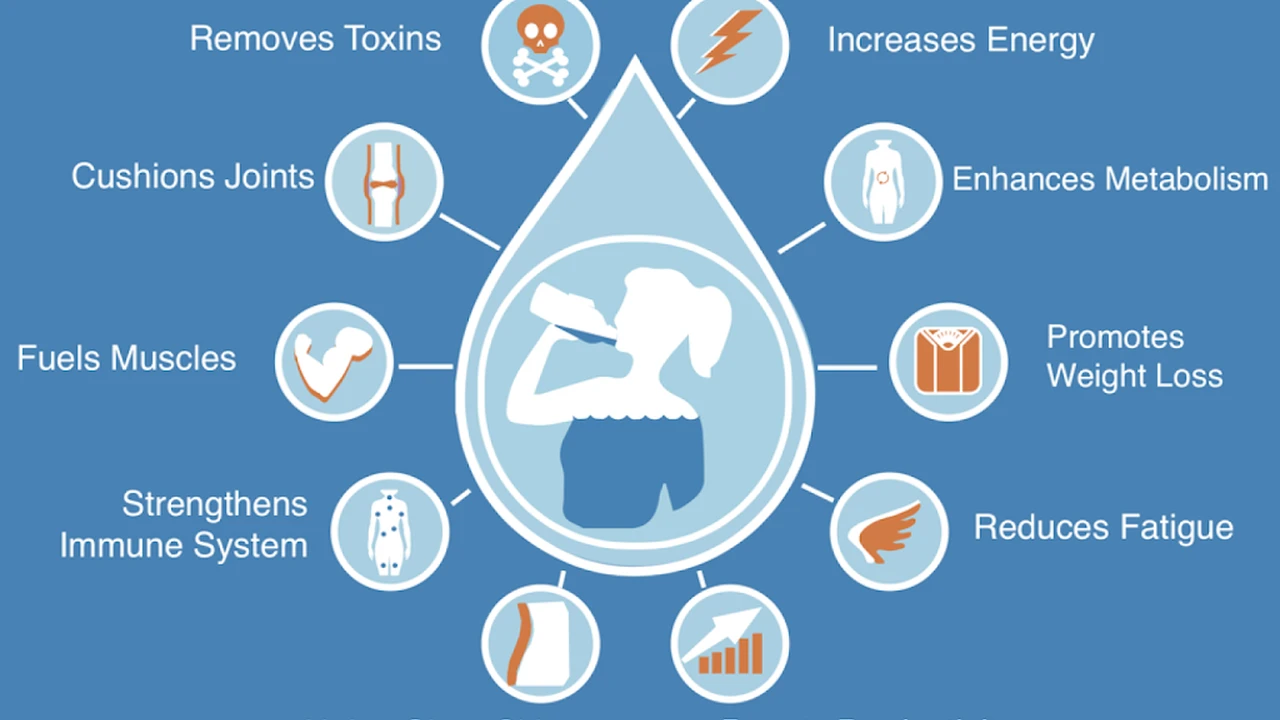How to Use Aromatherapy for Better Sleep
Managing chronic conditions can be challenging, but it's possible to live well with illness. Learn strategies for managing chronic conditions and improving your quality of life. Take control of your health and live a fulfilling life despite your condition.

Understanding Chronic Conditions What Are They Really
Okay, so what exactly are we talking about when we say "chronic conditions"? Basically, these are health problems that last for a long time – usually three months or more. They’re not like a cold that you get over in a week. Think about things like diabetes, heart disease, arthritis, asthma, chronic pain, and even mental health conditions like depression and anxiety. They can affect your daily life in a big way, but the good news is that with the right approach, you *can* manage them and still live a full and happy life.
The difference between acute and chronic issues is crucial. An acute illness, like the flu, has a sudden onset and short duration. Chronic conditions, on the other hand, develop gradually and persist over a longer period. This means the management strategies are very different. You don't just "cure" a chronic condition; you *manage* it to minimize symptoms, prevent complications, and improve your overall well-being.
Acceptance and Emotional Wellbeing Key to Chronic Condition Management
One of the biggest hurdles in managing a chronic condition is accepting it. It's totally normal to feel frustrated, angry, sad, or even scared when you're diagnosed. Allow yourself to feel those emotions, but don't let them take over. Finding healthy ways to cope with your emotions is essential. This might involve talking to a therapist or counselor, joining a support group, practicing mindfulness or meditation, or simply spending time doing things you enjoy.
Your mental health is intrinsically linked to your physical health, especially when dealing with chronic conditions. Stress can worsen symptoms and make it harder to manage your condition. Techniques like deep breathing exercises, progressive muscle relaxation, and spending time in nature can significantly reduce stress levels. Don't underestimate the power of a good support system either. Connecting with friends, family, or a support group can provide emotional support and a sense of community.
Lifestyle Changes Diet and Exercise for Managing Chronic Illnesses
What you eat and how active you are play a massive role in managing chronic conditions. There's no one-size-fits-all diet, but generally, focusing on whole, unprocessed foods is a good starting point. Think fruits, vegetables, lean protein, and whole grains. Limit sugary drinks, processed snacks, and unhealthy fats. For specific conditions like diabetes or heart disease, you might need to follow a more specialized diet plan. Talk to a registered dietitian or your doctor to figure out what's best for you.
Exercise doesn't have to mean hitting the gym every day. Even moderate activity like walking, swimming, or gardening can make a big difference. The key is to find something you enjoy and can stick with. Regular exercise can improve your mood, reduce pain, strengthen your muscles, and help you manage your weight. If you're new to exercise, start slowly and gradually increase the intensity and duration of your workouts. Again, consulting with your doctor or a physical therapist is a good idea, especially if you have mobility limitations.
Medication Management and Adherence Strategies for Chronic Diseases
Medication is often a crucial part of managing chronic conditions. It's important to take your medications exactly as prescribed by your doctor. Don't skip doses or change the dosage without talking to them first. If you're having side effects, let your doctor know. There might be ways to manage the side effects or switch to a different medication.
Adherence to medication regimens can be challenging, especially when you're taking multiple medications. Using a pill organizer, setting reminders on your phone, or asking a family member to help you remember can be helpful. It's also important to understand why you're taking each medication and what it's supposed to do. This can motivate you to stick with your treatment plan. Open communication with your pharmacist is also key. They can answer your questions about your medications and help you manage any potential drug interactions.
Pain Management Techniques for Chronic Pain Conditions
Chronic pain can be debilitating, but there are many ways to manage it. Medications like pain relievers, antidepressants, and anticonvulsants can help to reduce pain. Physical therapy, occupational therapy, and massage therapy can also be beneficial. In addition to these traditional treatments, there are also alternative therapies like acupuncture, yoga, and meditation that can help to manage pain.
Beyond medical treatments, lifestyle changes can also significantly impact pain levels. Maintaining a healthy weight, getting regular exercise, and managing stress can all help to reduce pain. Creating a comfortable and supportive environment is also important. This might involve using ergonomic furniture, adjusting your posture, and using heat or cold packs to relieve pain.
Regular Check-Ups and Communication with Healthcare Providers Key to Long-Term Health
Regular check-ups with your healthcare providers are essential for managing chronic conditions. These check-ups allow your doctor to monitor your condition, adjust your treatment plan as needed, and screen for any potential complications. It's also important to be open and honest with your doctor about your symptoms, your medications, and any other health concerns you have.
Being an active participant in your healthcare is crucial. Ask questions, take notes, and bring a family member or friend with you to appointments if you need support. Don't be afraid to advocate for yourself and your needs. If you're not happy with your current treatment plan, talk to your doctor about other options.
Assistive Devices and Home Modifications Enhancing Daily Living with Chronic Illness
Depending on your specific chronic condition, assistive devices and home modifications can significantly improve your quality of life. For example, if you have arthritis, you might benefit from using adaptive utensils, jar openers, or dressing aids. If you have mobility limitations, you might need to install grab bars in your bathroom, use a wheelchair or walker, or modify your home to make it more accessible.
There are many different types of assistive devices available, and the best ones for you will depend on your individual needs. Occupational therapists can help you to assess your needs and recommend appropriate devices. They can also teach you how to use the devices safely and effectively. Home modifications can be expensive, but there are often resources available to help you pay for them. Check with your local government agencies, non-profit organizations, and disability advocacy groups to see what assistance is available.
Building a Support System Finding Strength in Community
Living with a chronic condition can be isolating, but it's important to remember that you're not alone. Building a strong support system can provide emotional support, practical assistance, and a sense of community. This support system might include family members, friends, healthcare providers, therapists, and other people living with chronic conditions.
There are many ways to connect with other people living with chronic conditions. You can join a support group, participate in online forums, or attend local events. Sharing your experiences with others who understand what you're going through can be incredibly validating and empowering. Don't be afraid to reach out for help when you need it. There are many people who care about you and want to support you.
Specific Products and Their Uses for Chronic Condition Management
Let's get into some specifics! Here are a few products that can be incredibly helpful, depending on the condition you're managing:
Pain Relief Products for Chronic Pain Management
TheraGun Elite: This is a percussive therapy device that delivers deep tissue massage. It can help to relieve muscle soreness, stiffness, and pain. It's great for athletes, people with chronic pain, and anyone who wants to improve their muscle recovery. Use it on sore muscles after exercise, or to relieve tension throughout the day. It has different attachments for targeting specific muscle groups. Price: Around $399. Compared to cheaper massage guns (around $100), the TheraGun offers significantly more power and a longer battery life. However, budget-friendly options are a good starting point if you're unsure about percussive therapy.
TENS Unit (Transcutaneous Electrical Nerve Stimulation): This device uses electrical impulses to stimulate nerves and block pain signals. It's a non-invasive way to manage chronic pain, and it can be used for a variety of conditions, including arthritis, back pain, and fibromyalgia. Place the electrode pads on the area where you're experiencing pain and adjust the intensity of the electrical stimulation. Price: Around $30 - $100. While both TENS units and percussive massagers can help with pain, TENS units are better for nerve-related pain, while percussive massagers are more effective for muscle soreness.
CBD Cream: Cannabidiol (CBD) cream can help to relieve pain and inflammation. It's a topical product that you apply directly to the skin. It's a good option for people who want to avoid taking oral pain medications. Apply a small amount of cream to the affected area and massage it in. Price: Varies widely, but typically $20 - $60 per jar. Look for reputable brands that provide third-party lab testing to ensure the product's purity and potency.
Products for Diabetes Management and Blood Sugar Control
Continuous Glucose Monitor (CGM): Devices like the Dexcom G6 or Abbott Freestyle Libre continuously track blood sugar levels, providing real-time data to help manage diabetes. They eliminate the need for frequent finger pricks. The sensor is inserted under the skin, and it transmits data to a receiver or smartphone. Price: Sensor costs vary depending on the brand and insurance coverage, but can range from $50 - $150 per sensor per month. The reader device is a one-time purchase, typically around $100. CGMs offer a much more detailed picture of blood sugar fluctuations compared to traditional blood glucose meters, allowing for more precise insulin dosing and lifestyle adjustments.
Insulin Pen: Insulin pens, like the Novo Nordisk FlexPen or Sanofi SoloStar, make insulin injections more convenient and discreet. They offer pre-filled cartridges and adjustable dosages. They're easier to use than syringes and vials, especially for people with dexterity issues. Price: Varies depending on the type of insulin and insurance coverage.
Diabetic Socks: These socks are designed to improve circulation and prevent foot ulcers, a common complication of diabetes. They're typically made from breathable materials and have a non-binding top. Wear them daily to protect your feet. Price: Around $10 - $20 per pair. Look for socks that are specifically labeled as "diabetic socks" and that are made from moisture-wicking materials.
Products for Arthritis Management and Joint Pain Relief
Adaptive Utensils: These utensils have ergonomic handles that are easier to grip, making them ideal for people with arthritis or other conditions that affect hand strength. Use them for everyday meals. Price: Around $20 - $50 per set. Look for utensils with non-slip handles and a comfortable weight.
Compression Gloves: These gloves provide support and compression to the hands, which can help to reduce pain and swelling. Wear them during activities that aggravate your arthritis symptoms, such as typing or gardening. Price: Around $15 - $30 per pair. Make sure to choose the right size for a comfortable fit.
Electric Jar Opener: This device makes it easy to open jars, even if you have limited hand strength. It's a lifesaver for people with arthritis. Simply place the jar opener on top of the jar and press a button. Price: Around $20 - $40.
Products for Asthma Management and Breathing Support
Nebulizer: A nebulizer converts liquid medication into a mist that can be inhaled directly into the lungs. It's a good option for people who have difficulty using inhalers. Use it as directed by your doctor to deliver asthma medication. Price: Around $50 - $150. Nebulizers are often preferred for young children and people with severe asthma.
Peak Flow Meter: This device measures how quickly you can exhale air from your lungs. It can help you to monitor your asthma and identify triggers. Use it daily to track your peak flow readings. Price: Around $10 - $30. Regular peak flow monitoring can help you to adjust your asthma medication as needed.
Air Purifier: Air purifiers can help to remove allergens and irritants from the air, which can trigger asthma symptoms. Place an air purifier in your bedroom or living room. Price: Varies widely, but typically $50 - $300 depending on the size and features. Look for air purifiers with a HEPA filter, which is effective at removing small particles from the air.
Long-Term Planning and Goal Setting For a Fulfilling Life With Chronic Illness
Living with a chronic condition requires long-term planning and goal setting. It's important to set realistic goals that you can achieve, and to break down larger goals into smaller, more manageable steps. Celebrate your successes along the way, and don't get discouraged if you have setbacks.
Think about what's important to you and what you want to achieve in your life, despite your chronic condition. This might involve continuing to work, pursuing hobbies, spending time with loved ones, or volunteering in your community. Focus on what you *can* do, rather than what you *can't* do. Remember that you're still in control of your life, even if you have a chronic condition.
Ultimately, managing a chronic condition is a journey, not a destination. There will be good days and bad days, but with the right approach, you can live a full and fulfilling life. Stay positive, stay informed, and stay connected with your healthcare providers and support system.
:max_bytes(150000):strip_icc()/277019-baked-pork-chops-with-cream-of-mushroom-soup-DDMFS-beauty-4x3-BG-7505-5762b731cf30447d9cbbbbbf387beafa.jpg)






